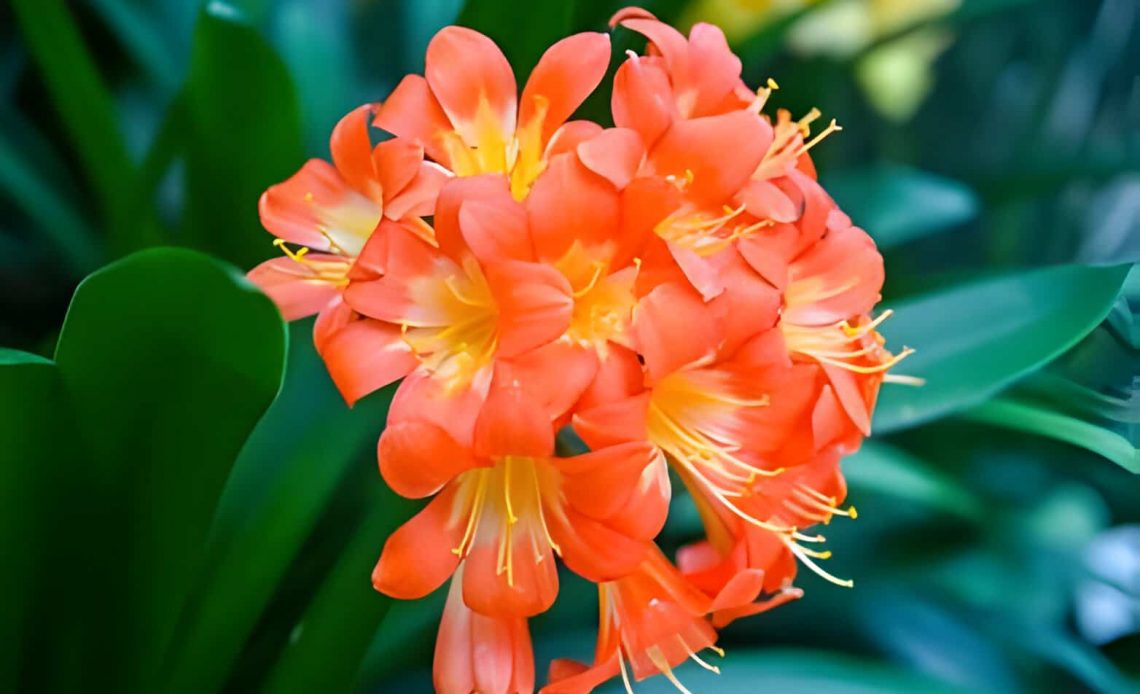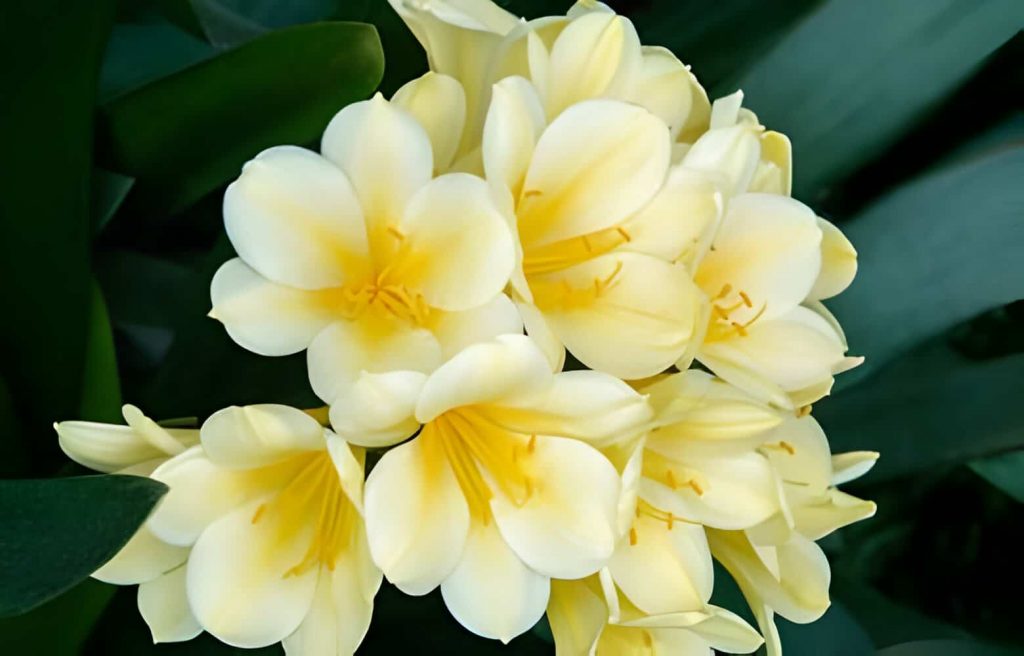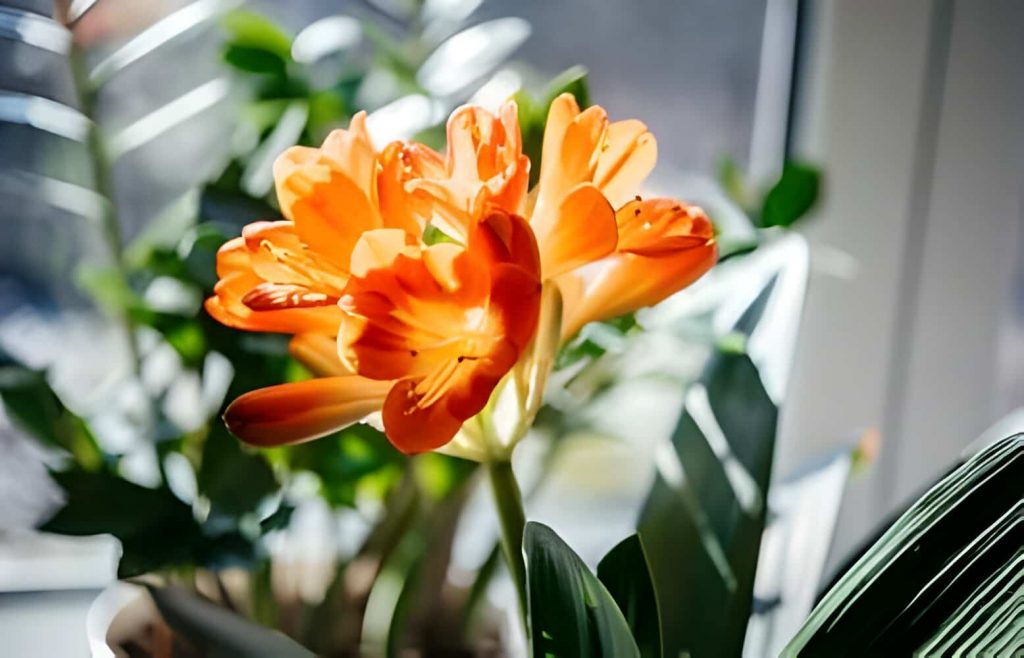
Clivias are beloved for their stunning orange flowers and lush green foliage. However, like all plants, they are susceptible to a number of pests and diseases. By being aware of these potential clivia plant problems, you can take steps to keep your plant healthy and thriving.
Clivia Plant Problems
Clivia plants, with their vibrant orange, red, and yellow blooms, can brighten any indoor garden. However, like all plants, Clivias are susceptible to various issues that affect their growth and health. Let’s explore common Clivia plant problems and how to prevent and treat them. Whether you’re a seasoned plant parent or just starting out, recognizing these issues is crucial for maintaining the health of your Clivia plants. Here are some common problems you might encounter:
Clivia Plant Pests

Aphids
These tiny, sap-sucking insects can cluster on the undersides of leaves, causing them to curl and distort.This can lead to distorted growth and a weakened plant. To combat aphids, you can use a strong water spray to knock them off or apply insecticidal soap for a more organic approach.
Mealybugs
These white, cottony insects feed on plant juices and leave behind a sticky residue. Treating clivia plant problems like mealy bugs can be done with neem oil or by dabbing individual pests with alcohol using a cotton swab.
Lily Borer
This caterpillar burrows into the crown and stems of the plant, causing wilting and stunted growth. Unfortunately, lily borers are difficult to control once established. Inspect your plant regularly and remove any signs of infestation by hand.
Red Spider Mites
The Invisible Threat Red spider mites are almost microscopic but can cause visible damage by creating fine webs and speckling on leaves. Increasing humidity and using miticides can help solve these clivia plant problems.
Slugs and Snails
These slimy creatures munch on leaves, leaving behind ragged holes. Handpicking and using traps are effective methods for controlling slugs and snails.
Clivia Plant Diseases
Fungal and Bacterial Diseases
Root Rot and Leaf Spot Fungal diseases are among the most prevalent clivia plant problems. Root rot, caused by fungi such as Phytophthora and Pythium, leads to the decay of the root system, resulting in a plant that is unable to absorb nutrients effectively. Symptoms include yellowing leaves, wilting, and a general decline in plant vigor. To treat root rot, it’s essential to remove the affected plant from its pot, trim away the rotted roots, and repot it in fresh, sterile potting mix. Ensuring proper drainage and avoiding overwatering are key preventive measures. Leaf spot diseases, caused by fungi like Cercospora and Alternaria, manifest as discolored spots on the leaves. These spots can enlarge and merge, causing significant leaf damage. Treatment involves removing the affected foliage and applying fungicides containing chlorothalonil or copper-based compounds. As a preventive measure, avoid wetting the leaves when watering and provide good air circulation around the plants.
Soft Rot and Blight
Bacterial soft rot, caused by Erwinia spp., results in mushy, water-soaked areas on leaves and stems. Bacterial blight, on the other hand, leads to dark, water-soaked lesions that can rapidly expand under humid conditions. Both diseases can spread quickly and are often fatal. Treatment options are limited, but affected plant parts should be removed and destroyed. Copper-based bactericides can be applied as a preventive measure, but the best defense is to maintain a clean growing environment and avoid injury to the plants, which can serve as entry points for bacteria.
Virus
While less common, clivia can contract viruses that cause distorted leaves and stunted growth. Unfortunately, there is no cure for viral diseases and infected plants should be removed to prevent the spread to others.
Nematodes
Root-Knot and Lesion Nematodes Nematodes, particularly root-knot and lesion nematodes, are microscopic worms that infect the roots of clivia plants, causing swellings (galls) or lesions. Infected plants may exhibit stunted growth, yellowing, and wilting. Chemical control of nematodes is challenging and often not feasible for home gardeners. Soil solarization, a process of heating the soil by covering it with clear plastic during the hot summer months, can reduce nematode populations. Additionally, incorporating organic matter into the soil can encourage the growth of beneficial microorganisms that help control nematodes.
Scale Insects

Armored and Soft Scales Scale insects are another significant clivia plant problem. Armored scales have a hard protective covering and are more difficult to control than soft scales, which are covered with a waxy substance. Both types feed on the sap of clivia plants, causing yellowing, leaf drop, and stunted growth. Treatment involves the application of horticultural oils or systemic insecticides. It’s important to thoroughly cover the plant, as scales can hide in crevices. Repeated applications may be necessary to control the population.
Prevention is Key
The best way to deal with clivia plant problems is to prevent them altogether. Here are some preventative tips:
- Provide adequate light: Clivia prefer bright, indirect light. Insufficient light can weaken the plant and make it more susceptible to pests and diseases.
- Water correctly: Water your clivia only when the top inch of soil feels dry. Overwatering is a major cause of clivia plant problems.
- Maintain good air circulation: Stagnant air can encourage pests and diseases. Ensure proper ventilation around your clivia plant.
- Inspect regularly: Regularly examine your plant for signs of pests or diseases. Early detection allows for prompt treatment and minimizes damage.
